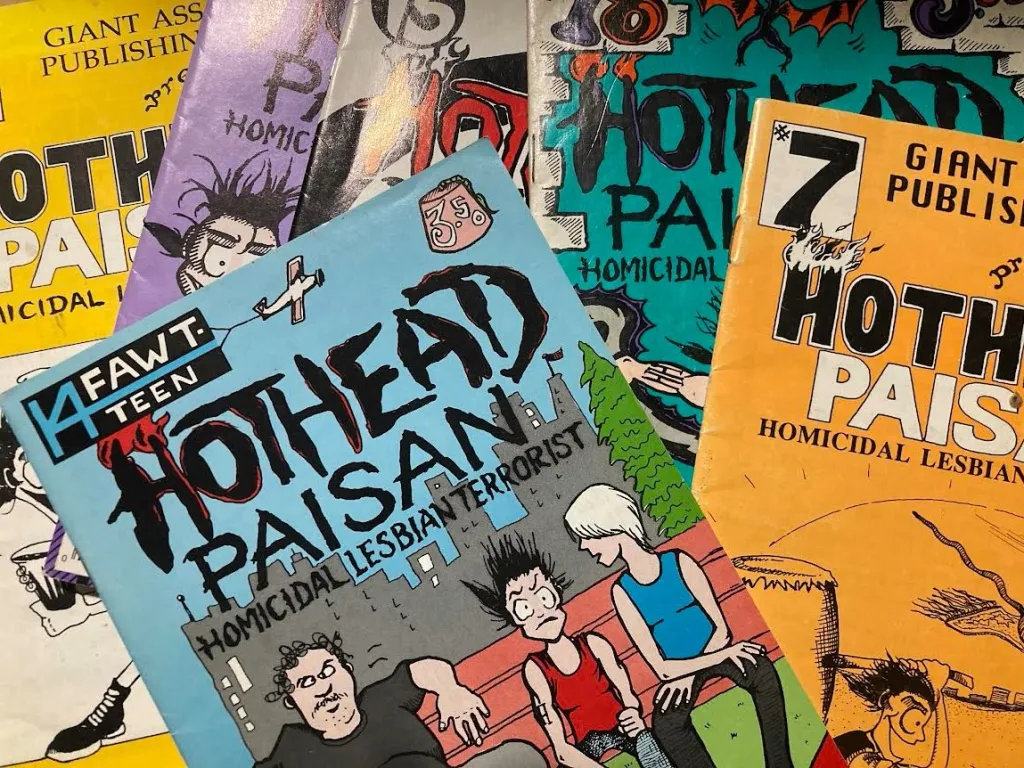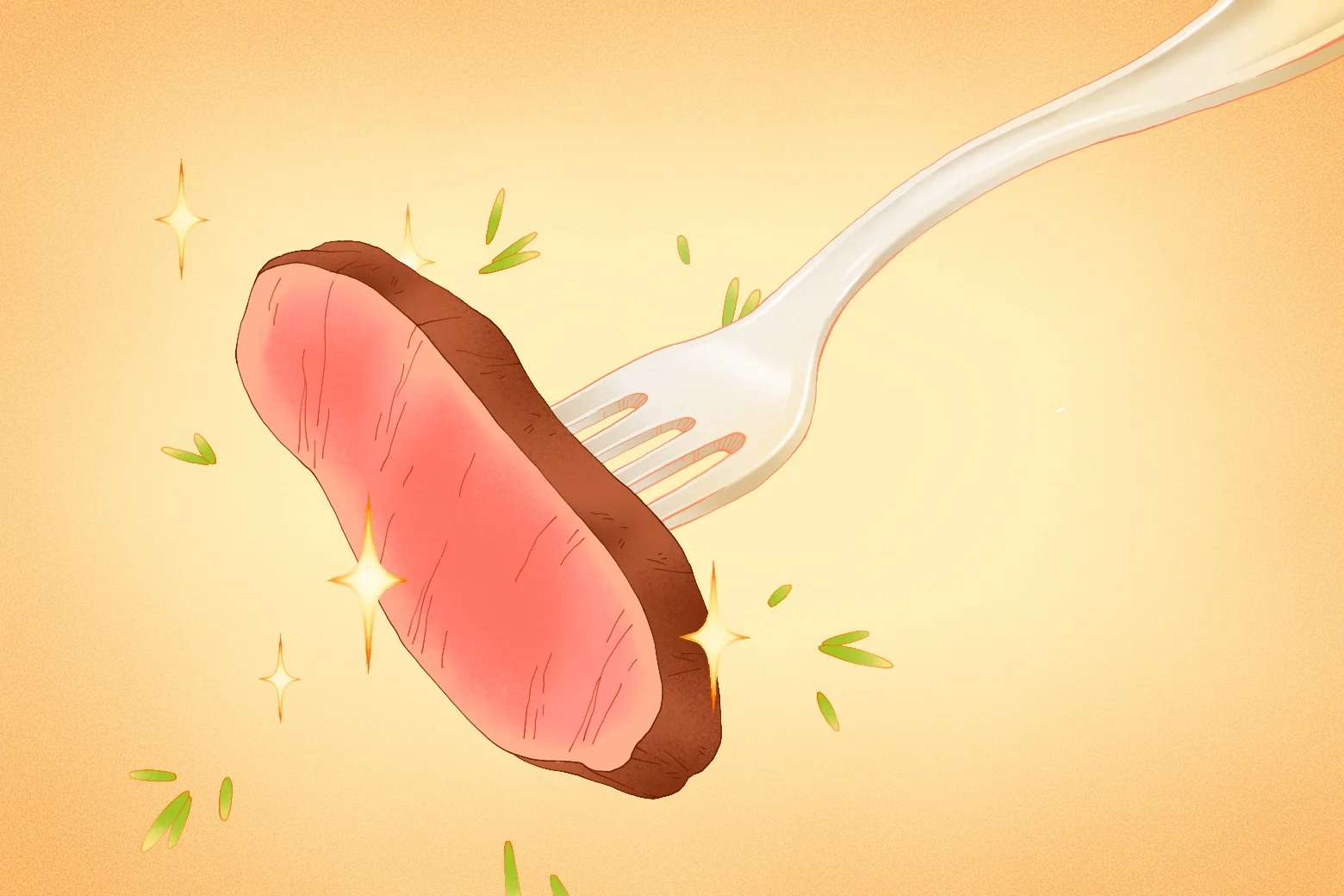
In 1991, a New Haven artist named Diane DiMassa got so fed up with the rampant homophobia, misogyny, hypocrisy, social injustice and just plain rudeness she was seeing every day and poured her frustrations into a wild adventure of cartoon vengeance perpetrated by an axe-wielding take-no-prisoners provocateur named Hothead Paisan.
The self-published comics were extreme, explicit, riotous and hysterical. They fit the hardcore punk attitudes bubbling up in the counterculture of radical feminism at the time. They sold well in book stores, underground bookshops and comics shops throughout the country.
“I had no idea there was a zine explosion going on,” DiMassa said. She just knew she needed to vent her feelings through her art. In the back of the first issue of “Hothead Paisan,” in a section of the comic that in future issues would be overflowing with effusive comments from devoted readers, DiMassa editorialized: “By the way … how come all you very talented queers aren’t doing more cartoons? Huh? No excuses!! Just do it!!! It’s important! It’s cathartic! It’s not easy! You get neck criks and baggy eyes and the pay sucks and the cat jumps on it with dirty feet but if you don’t do who will?”
Taking her own advice, Dimassa filled 20 more issues with Hothead’s extroverted exploits over the next decade. Most of that work, plus selected examples of the character’s leap into other media such as stickers and candy bar wrappers, has been collected in a new book. “Hothead Paisan: Homicidal Lesbian Terrorist” which was published by the prestigious New York Review Comics imprint of New York Review Books.
DiMassa will be discussing her work and signing copies of the new book on Sept. 25 at 6:30 p.m. at Real Art Ways in Hartford. It’s one in a series of readings she’s giving around New England to celebrate the new collection.
DiMassa said New York Review Comics editor Lucas Adams reached out to her out of the blue and said they want to get Hothead Paisan back in print. “I pulled out everything I had and they were blown away. Then they got even more jazzed when they asked who owned the rights to it and I said ‘I do!’”
The publisher has amplified the collection with a long interview with DiMassa, an afterword by the artist herself and a few pieces that were published outside of the original comics. There is also an introduction by the celebrated writer and activist Sarah Schulman, whose dozens of books include the novels “People in Trouble” and “Rat Bohemia,” the plays “Carson McCullers” and “The Lady Hamlet” and the nonfiction works “My American History: Lesbian and Gay Life During the Reagan/Bush Years” and “Let the Record Show: A Political History of ACT UP New York, 1987-1993.” Schulman is an ideal person to comment on the continued impact of DiMassa’s work.
“When Hothead turns on the TV, the screen clearly spells out the message ‘You don’t exist, freak,’ This self-proclaimed ‘homicidal lesbian terrorist’ might seem to be locked in the past — when rage was visible and we had our own presses, so our true feelings could be expressed and circulated — but a reread shows Diane DiMassa to be acutely prophetic. She predicted a world beyond the gender binary long before the language had even cohered,” Schulman wrote.
New York Review Comics is dedicated to republishing significant graphic narrative art that’s long been out of print. Previous collections include work by Black 1960s cartoonist Charles Johnson (“All Your Racial Problems Will Soon End”), Mark Beyer’s post-modern depressive saga of Amy and Jordan (“Agony”), Belgian artist Dominique Goblet’s cartoon memoir “Pretending is Lying,” existentialist 1940s New Yorker cartoonist Abner Dean’s “What Am I Doing Here?” and long forgotten graphic novels such as William Gropper’s “Alay-Oop.”
DiMassa is not the first Connecticut artist to receive a New York Review Comics reprint. Ernie Bushmiller’s “Nancy & Sluggo’s Guide to Life” and Mort Walker’s “Lexicon of Comicana” are also among the dozens of titles in the press’ catalogue.
The book runs over 450 pages but is not quite a complete collection of all the Hothead Paisan comics. Issue No. 20, which was a comical lexicon of words and phrases associated with Hothead rather than a conventional comics story, is being saved for a future collection, as are random drawings and illustrations from beyond the comics. There were also several Hothead Paisan calendars which weren’t represented here.
A more complete single-volume collection of Hothead Paisan comics came out in 1999 from Cleis Press, which had previously published two separate collections. The Cleis Press editions were the last major anthologies of DiMassa’s work. While those books were impressive in other ways, the print quality was not as good as it could be and the reprints were done in a format that was much larger than the original comics. The new New York Review Comics edition has excellent reproduction and its size is closer to that of the original comics, which measured 8 1/2 by 5 1/2 inches.
The comics were originally published and distributed by DiMassa’s then-girlfriend Stacy Sheehan. The couple broke up but continued to work together for a while. “I moved to San Francisco for a few years,” DiMassa said — a thriving environment for counterculture cartoonists in the ‘90s — “then Northampton, then back to Connecticut. I was tattooing for a while.” The ending of Hothead Paisan came quite naturally. As she says in the exhaustive 15-page interview with Jay Graham at the end of the book, DiMassa own life became more stable and less chaotic. She longer needed the Hothead Paisan character as an emotional release.
When her mother was diagnosed with Alzheimer’s disease, DiMassa said she helped care for her and “was too exhausted to do anything else.”
One of the pioneers of LGBTQ+ comics is pleased that “there are so many queer cartoonists now,” and that the comics are taught in university courses in Queer Studies and Feminism. She’s been sent a lot of dissertations and term papers analyzing her Hothead comics over the years. Once a high-octane distraction on the newsstands, Hothead Paisan is now in the history books.
“I apparently hit a raw nerve,” DiMassa said. “Thirty years later and it’s still as relevant as ever.”



